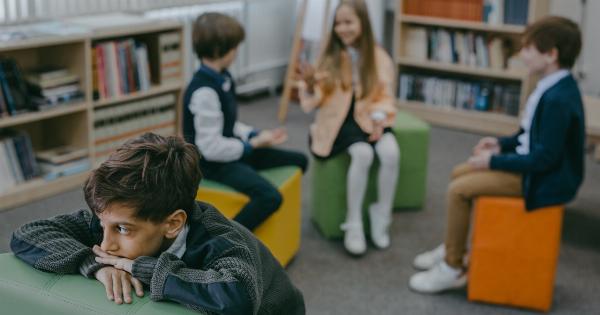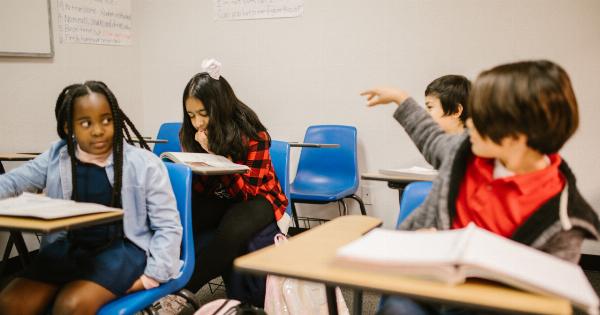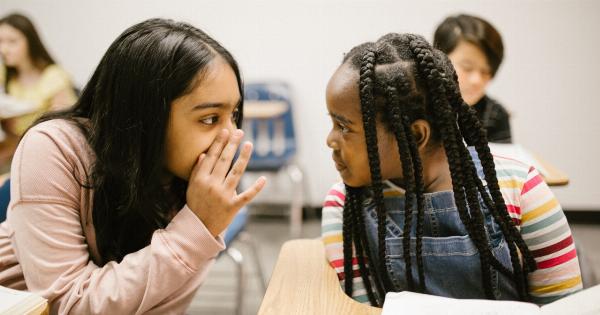Bullying is a persistent problem that affects millions of students worldwide.
It not only creates a hostile environment for those directly involved, but also has long-term negative effects on the mental, emotional, and academic well-being of all students. Recognizing the seriousness of this issue, many schools are implementing strategies and programs to promote a safe and inclusive learning environment.
By taking a proactive stance against bullying, schools can make a significant difference in the lives of their students.
The Importance of a No Tolerance Policy
One of the most critical steps schools can take to combat bullying is to establish a firm no tolerance policy. This policy sends a clear message to students, parents, and staff that bullying will not be tolerated in any form.
By creating a safe and supportive environment, schools can empower victims to speak up and seek help, discourage bullies from engaging in harmful behaviors, and promote a culture of respect and kindness.
Building Awareness and Empathy
Creating awareness about bullying and its consequences is crucial for changing attitudes and behaviors.
Schools can organize awareness campaigns, workshops, and assemblies to educate students about the different types of bullying, its harmful effects, and ways to prevent it. Teachers can incorporate relevant topics into the curriculum, fostering empathy and understanding among students. By teaching empathy, schools can promote compassion and encourage students to stand up against bullying.
Implementing Effective Reporting Mechanisms
Encouraging students to report incidents of bullying is essential in addressing the issue promptly. Schools should establish clear reporting mechanisms that allow students to safely and confidentially report any instances of bullying.
This can be done through anonymous reporting systems, trusted staff members, or online platforms. It is crucial to ensure that students feel comfortable and supported when reporting bullying, and that appropriate actions are taken to address each report.
Training and Educating Staff
Staff members, including teachers, administrators, and support personnel, play a crucial role in creating a safe environment for students. Providing comprehensive training on recognizing, preventing, and addressing bullying is essential.
Training should include strategies for intervening in bullying situations, understanding the psychological and emotional impact on victims, and promoting positive behavior within the school community.
Involving Parents and Guardians
Parents and guardians are valuable partners in addressing bullying. Schools should actively involve parents in anti-bullying initiatives, providing them with resources and guidance to support their children.
By organizing workshops and parent-teacher meetings focused on bullying prevention, schools can create a strong network of support that reinforces the message that bullying is not acceptable.
Cultivating a Positive School Culture
A positive school culture is key to preventing and addressing bullying effectively. Schools should actively promote positive interpersonal relationships, encourage inclusivity, and celebrate diversity.
This can be done through the implementation of peer mentoring programs, character education initiatives, and extracurricular activities that foster teamwork and cooperation. By creating a positive and supportive environment, schools can reduce the likelihood of bullying and promote healthy social interactions among students.
Providing Counseling and Support Services
Bullying can have severe psychological and emotional consequences for victims. Schools should provide counseling and support services to victims of bullying, as well as to students who engage in bullying behaviors.
Trained professionals can help victims cope with the trauma, develop resilience, and regain self-esteem. Counseling can also address underlying issues that may contribute to the bullying behavior, enabling bullies to learn empathy and alternative ways of interacting with their peers.
Establishing Peer Mediation Programs
Peer mediation programs empower students to contribute to a positive school climate by resolving conflicts amongst their peers.
Trained student mediators can assist in resolving incidents of bullying, fostering communication, and promoting understanding. Peer mediation programs create a sense of ownership among students and provide them with valuable skills in conflict resolution that can be applied throughout their lives.
Regular Evaluation and Improvement
Continuous evaluation of anti-bullying initiatives is essential to determine their effectiveness and make necessary improvements.
Schools should regularly assess the impact of their policies and programs through anonymous surveys, focus groups, or other evaluation methods. Feedback from students, parents, and staff should be taken into account to chart a course for improvement and ensure that the school’s efforts to combat bullying remain dynamic and relevant.
Collaborating with Community Organizations
Schools can benefit from collaborating with community organizations that focus on bullying prevention and intervention.
By partnering with local non-profit organizations, mental health agencies, or law enforcement agencies, schools can tap into additional resources, expertise, and support. Community partnerships extend the reach of anti-bullying efforts and provide students with opportunities for further education and engagement on the issue.

























